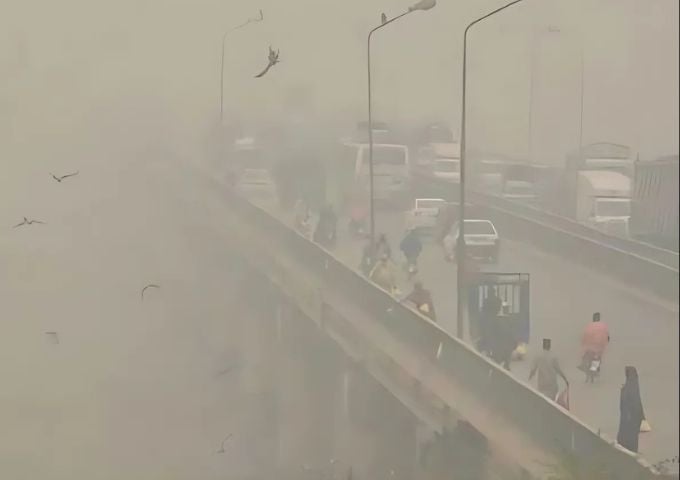By: James Rehmat
Punjab, particularly its capital Lahore, is struggling with severe air pollution and persistent smog, a crisis that grows especially acute in the winter months. Despite government initiatives and public awareness campaigns, air quality continues to deteriorate across Lahore and surrounding districts. Experts point to a combination of systemic issues—governance challenges, industrial pollution, agricultural practices, urbanization, and socio-economic disparities—that hinder efforts to tackle the problem.
A significant contributor to Punjab’s smog crisis is ineffective governance and poor policy implementation. While air quality laws and regulations exist, enforcement is often weak. Government agencies tasked with overseeing pollution control are frequently under-resourced, and some industries evade oversight or benefit from political connections that allow them to bypass regulations. Policies that may seem effective on paper often fail to materialize in practice due to bureaucratic obstacles, lack of coordination among departments, and limited monitoring.
Industrial pollution is another major factor. Lahore and nearby districts are home to many factories, textile mills, and power plants, which release harmful pollutants into the atmosphere. Despite environmental standards, many industrial facilities exploit regulatory gaps or operate informally, emitting pollutants unchecked. Fossil fuel burning remains prevalent, and aging power plants that fail to meet modern environmental standards continue to operate, compounding the region’s air quality issues.
Agricultural practices, particularly crop residue burning, are also a well-known contributor to smog. After harvesting rice and wheat, some farmers burn crop stubble, releasing large amounts of smoke and particulate matter into the air. While the government has introduced financial incentives to encourage alternative practices, uptake remains limited. Many farmers lack the resources or awareness needed to adopt cleaner, sustainable practices.
Rapid urbanization has exacerbated the pollution crisis. Lahore’s growing population has led to increased vehicle emissions from congested roads and a rise in dust from widespread construction activities. The city’s aging public transportation system pushes many to rely on private vehicles, increasing emissions further. Urban planning shortcomings and a lack of investment in sustainable transit infrastructure are contributing to air quality challenges in the city.
Public awareness about smog and its health risks is alarmingly low. Many residents are unaware of how daily activities, like using solid fuels for cooking, contribute to air pollution. A disconnect between the government and the public, coupled with insufficient educational campaigns, means that warnings about smog risks often fail to influence behavior. Experts believe a more robust public education campaign could promote awareness of both the problem and individual actions that could help mitigate it.
Socio-economic issues further complicate the fight against smog. For many lower-income residents, economic survival takes precedence over environmental concerns. Limited financial resources drive reliance on more affordable but polluting fuels, and poorer communities often face greater exposure to polluted air without adequate resources for mitigation, like air purifiers. This inequality underscores the need for initiatives that consider both environmental and social justice.
Climate change has also worsened Punjab’s air quality challenges. Shifts in weather patterns, such as temperature inversions and reduced rainfall, trap pollutants close to the ground, intensifying smog. With climate change increasing the frequency of extreme weather events, such as droughts and floods, agricultural practices and environmental stability are further impacted. Experts argue that efforts to combat air pollution should incorporate climate resilience and address broader environmental challenges.
The complex nature of Punjab’s smog crisis requires a coordinated approach involving government, industry, and the public. Experts emphasize the need for rigorous enforcement of pollution regulations, increased public awareness, and investment in cleaner technologies. Addressing urban planning deficiencies, enhancing public transportation, and supporting socio-economic initiatives are also critical steps. Only with a comprehensive approach that includes both environmental and social measures can Punjab hope to address its persistent smog crisis and secure cleaner air for future generations.


